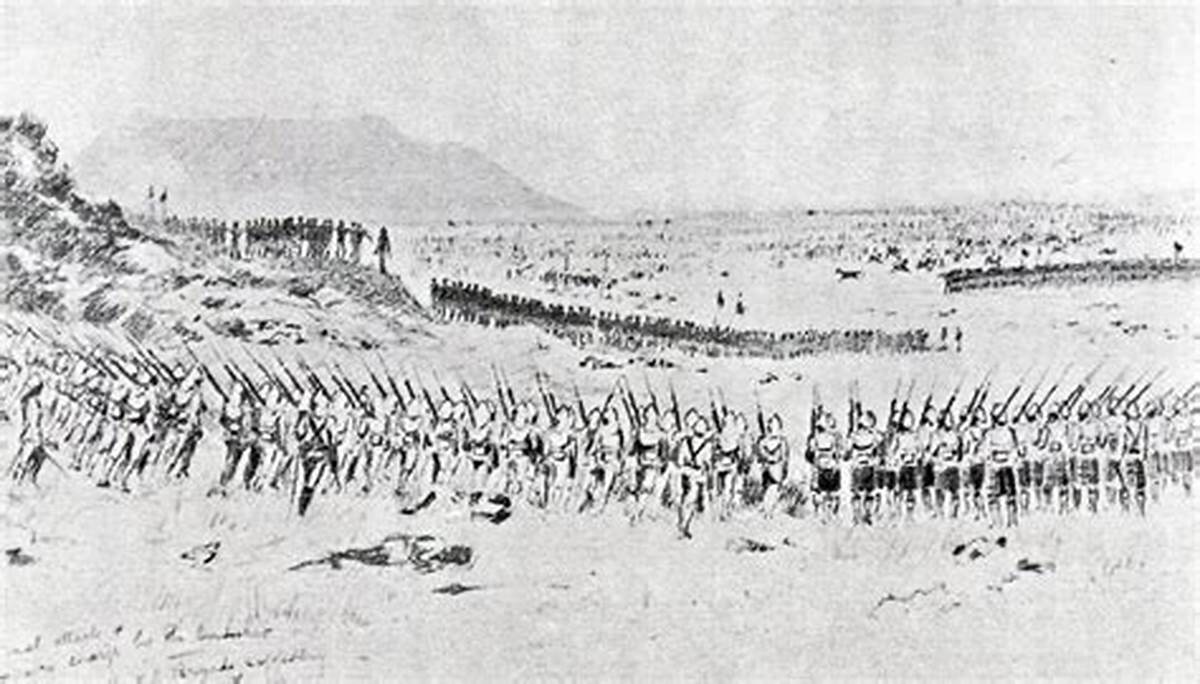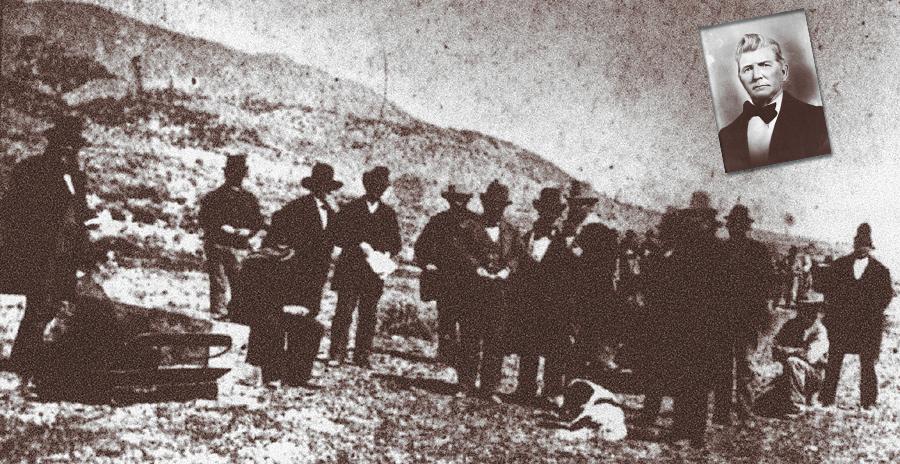John Lee was a pioneer in the United States and a well-known early member of the Latter Day Saint Movement in Utah. He was born on September 6, 1812, in Kaskaskia, Illinois, Territory. He was 3 years old when his mother passed away. When he was young, relatives adopted him from his alcoholic father and hired him to work on their farm. At the age of 20, John D. Lee started dating Agatha Ann Woolsey in Vandalia, Illinois. In the summer of 1833, she became his first of 19 wives, and he soon joined the fledgling Latter-day Saints movement.
After being found guilty of participating in the Mountain Meadows Massacre, Lee was given a death sentence and killed in 1877. People seem to believe him to have been an honest person. Still, due to religious fanaticism and his faith in his crooked Church leaders, his moral vision was twisted, and he committed crimes on the orders of his superiors, thinking that he was doing the right thing and continuing to work for the glory of God.
This is based on his life and confessions. According to his writings, Joe Smith, Brigham Young, and other Mormon leaders used him as a tool to carry out their dirty work from the time he joined the Church. When he wore out and was unable to longer be of any use to them, they chose to sacrifice him with as little sense of morality as a carpenter would throw away an old, worn-out saw or chisel.
What Crime Did Lee Commit?
120 to 150 settlers, most of whom were Arkansans, began their trip toward the promise of a better life in California in April 1857, close to Harrison (Boone County). While they were camped on a plateau in southern Utah known as Mountain Meadows, a group of Mormons ambushed them before they were able to reach their destination. Except for the seventeen children who were placed in Mormon homes, all of the travelers perished. Only one person was convicted for participating in the massacre, and that person was John D. Lee.
The emigrants were promised that John D. Lee and his troops would accompany them to security in Cedar City when they offered a truce on September 11 as they neared the campsite under a white flag. All they would need to do is leave the Paiutes with their livestock and belongings.
Since they had no other choice than to follow Lee and the militia out of the camp, the emigrants—about 120 men, women, and children—lay down their weapons and divided them into three groups, the last of which was made up entirely of adult males. It was over in a flash. The men from Arkansas were slain at close distance; arrows and bullets killed the women and children in front of an ambush group. Nobody older than seven years old lived. The bodies were quickly laid to rest.
Even though Lee asserted that he was used as a scapegoat and that other Mormons were more closely connected to the arranging and carrying out of the murder, Brigham Young excommunicated Lee and Haight for their respective actions, Lee was the only one to be prosecuted. Lee was found guilty in 1877 and given a firing squad death sentence following a first trial that resulted in a mistrial.
The Trial And Conviction Of John Lee
Lee was detained and put on trial in 1874 for orchestrating the massacre. Due to what appears to have been the prosecution’s attempt to implicate Brigham Young as the ultimate planner of the massacre, the first trial concluded inconclusively with a deadlocked jury. Lee was found guilty and given the death penalty following a second trial in 1876, in which the prosecution directly blamed him. Lee said he had not personally killed anyone. However, he never disputed his involvement. Lee argued further that Brigham Young was unaware of the incident until it occurred.
Lee’s Execution
John Doyle Lee sat atop the casket where his remains will be interred at Mountain Meadows, the scene of the 1857 massacre, on March 28, 1877, while dressed in a coat and scarf. There was a photographer nearby. Lee requested copies of any photographs created to be given to each of his previous three spouses. The cameraman concurred. Lee smirked. An hour before noon, he withdrew his coat and hat, shook hands with the guys nearby, and turned to face the five firing crew members.
Gunfire was launched at the command of U.S. Marshal William Nelson in the ravine where numerous shots had been fired twenty years earlier, and Lee collapsed onto his casket dead.
On April 20, 1961, the Church approved “reinstatement to membership and former blessings to John D. Lee” “after evaluating all the evidence available.” Four decades later, however, the Church took full ownership of the incident that resulted in Lee’s execution.
Why Does A Bright Man, As Lee would, Allow Himself To Be Fooled While Maintaining Faith In His Leaders?
His former associates would have jeopardized his life as well, as he admits, and either “blood atoned” for him or denounced his crimes to the civil authorities, securing his conviction. The answer to this is that he had fanatical, unwavering confidence in the Mormon religion’s honesty and felt that no other religious philosophy would grant him immortality and happiness in the afterlife.
In addition, he had several wives who had given birth to his kids, and he appears to have had warm, fatherly feelings for each of them. If he had left the Mormon Church, however, the law would have required him to give up all of his wives except for the first one, and his kids would have been labeled as heretics.
John D. Lee was therefore guided, little by little, from one crime to another until his bosses had used him to the fullest extent before they killed him as a felon to rescue themselves and hide the Church’s transgressions.






